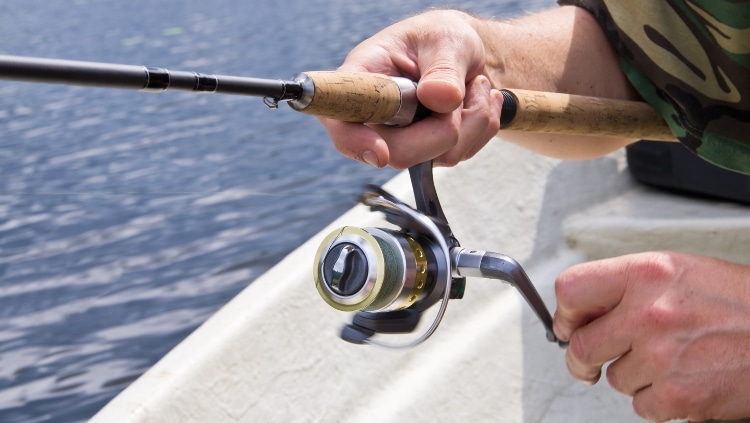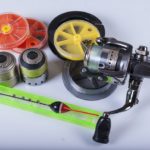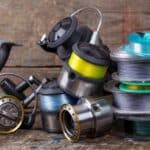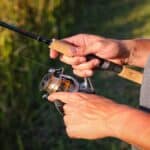When a monster grabs your line and starts to pull, you know you’re in for a fight. Over the years, fishing reels have been developed to work on your side to help bring any fish up and out of the water.
One of the most crucial additions to fishing reel technology is drag. The drag can make the difference between snapping a line and successfully bringing home dinner.
The drag on a fishing reel is the tension that stops the reel from spinning backward. Mechanisms inside the reel are adjusted to allow some line to feed out at a certain point to avoid putting the line and rod under too much stress and potentially breaking.
Essentially, adjusting your drag correctly can be the key to success. Plus, you get to go home with your favorite fishing rod in one piece.
What Does Drag Do on a Fishing Reel?
Drag can still be a bit confusing, especially if you’re new to the sport. Many beginning anglers don’t understand the importance of drag and won’t use it to their advantage.
The Purpose of Drag in Fishing
When a fish comes and grabs onto the bait or lure you’ve cast into the water, it will start running away with it. You have it on the line, but who knows how strong or big the fish is that’s taken the bait.
If it’s too big, you risk it snapping your line and taking off. Even worse, it could be bigger than you were expecting and go well above the power of your rod, leaving one piece in the water, and one piece in your hands.
Drag allows the fish to pull a bit of line out at a certain weight. For example, if you set the drag to let out around 10 pounds, the reel will start to feed line out when the fish pulls around 10 pounds worth of weight.
Yes, the fish will get a bit farther away from you, but this is where the game starts. Some line gets let out, but then you reel harder and bring that fish in again. The point is to bring them back in more quickly. Slowly, the fish will move closer to you and onto land.
What is drag fishing?
The process I just described is drag fishing. A little bit of line goes out. More comes in.
It’s a back-and-forth style of fishing that allows for bigger fish to come in without the constant pulling fight that could break all of your expensive gear.
Allowing the fish to take out a bit of line also leads to more time on the line for the fish. This will wear it out, making your fight easier and easier. If you try to haul it in all at once, the fish will use its biggest burst of energy to break away.
Drag fishing is all about playing the long con. The fish thinks it’s getting away, but you have it right where you want it.
How Does Drag Work on a Fishing Reel?
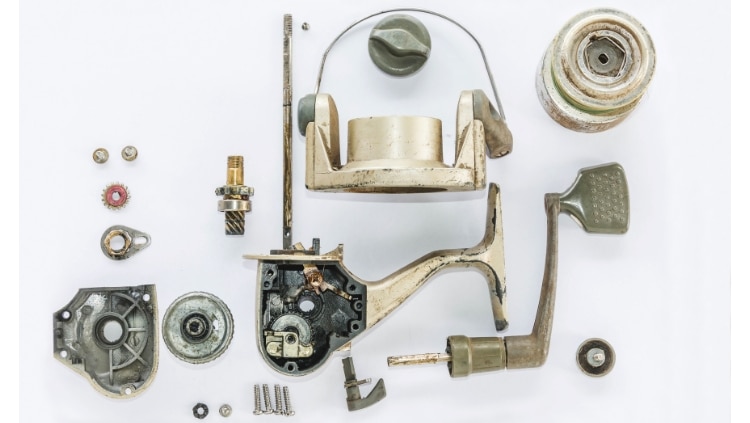
Now you know that drag fishing is very effective but still might not have any idea what’s actually going on. Understanding how drag works on a fishing reel will help you to set the drag better and know how to make an unbreakable setup.
Knowledge is power. So let’s look at how fishing drag actually works on the fishing reel, what max drag refers to, and the different mechanisms you may encounter.
How does it work?
No matter what mechanism you’re operating with, something in the reel allows the line to feed out at a certain point.
On most reels, this is a system of plates that trap the line between themselves and slow the line down. This can put a lot of wear and tear on the line over the long term, but it is incredibly efficient and easy to use.
Some reels use a centrifugal force mechanism that relies on the reels spinning. This is a more complicated setup but results in more fine-tuning and less wear and tear on the reel over the years.
What is max drag on a reel?
Maximum drag on your fishing reel refers to the maximum force at which the reel is rated to operate safely.
This number is significant when you put it together with line weight. From there, you can make a good combination, along with your fishing rod, to make an unbreakable setup for fishing any size of fish.
When you go above your maximum drag but below the line weight, the line will strip off the reel, and you’ll lose both your line and fish.
Any time a fish goes over the line weight and below the max drag, your line will snap.
This is only one of many examples that prove fishing is an art form and takes years to understand fully.
How Drag Mechanisms Differ in Different Reel Types
When you pick up different fishing reels, you’ll notice that the drag mechanisms often look different. The good news is they all operate on the same basis. They’re all working towards letting some line out. If you understand that, the mechanisms themselves are rather simple.
Spinning Reels
For starters, spinning reels often have front or rear drags. This just refers to the location of the adjustment knob. Many say that rear drags are easier to adjust on the fly, making them their first choice. Front drag systems make switching line out much easier but are starting to disappear as manufacturers need to install more parts.
Baitcasting Reels
Baitcasting reels have star-shaped knobs on top that will control the drag setting. This works similarly to spinning reels but is just in a different spot. The mechanism it controls, however, is the centrifugal force mechanism. Baitcasting reels are more complicated but are favored by professionals for the ability to fine-tune the drag.
Fly Reels
Fly reels most often use a disc drag system operated by a small knob on the face of the reel. Some utilize a click-and-pawl system over the disc drag. These are less powerful and not the favorite of most fly fishermen out there.
What should your fishing drag be set to?
This is a common question that is hard to answer. There are a lot of different opinions out there, just like with any topic in the fishing community. People swear that their granddaddy did this or that, but others swear by their own experience.
Either way, there’s a basic rule to follow for setting your drag.
The drag should generally be between ¼ and ⅓ of your line’s breaking weight. So, using a line with a 60-pound weight would mean setting your drag between around 15 to 20 pounds.
You can measure what your drag is set to with a scale or a drag scale. Either will tell you what your line is set to, and you can work to get it perfect before ever casting the line.

